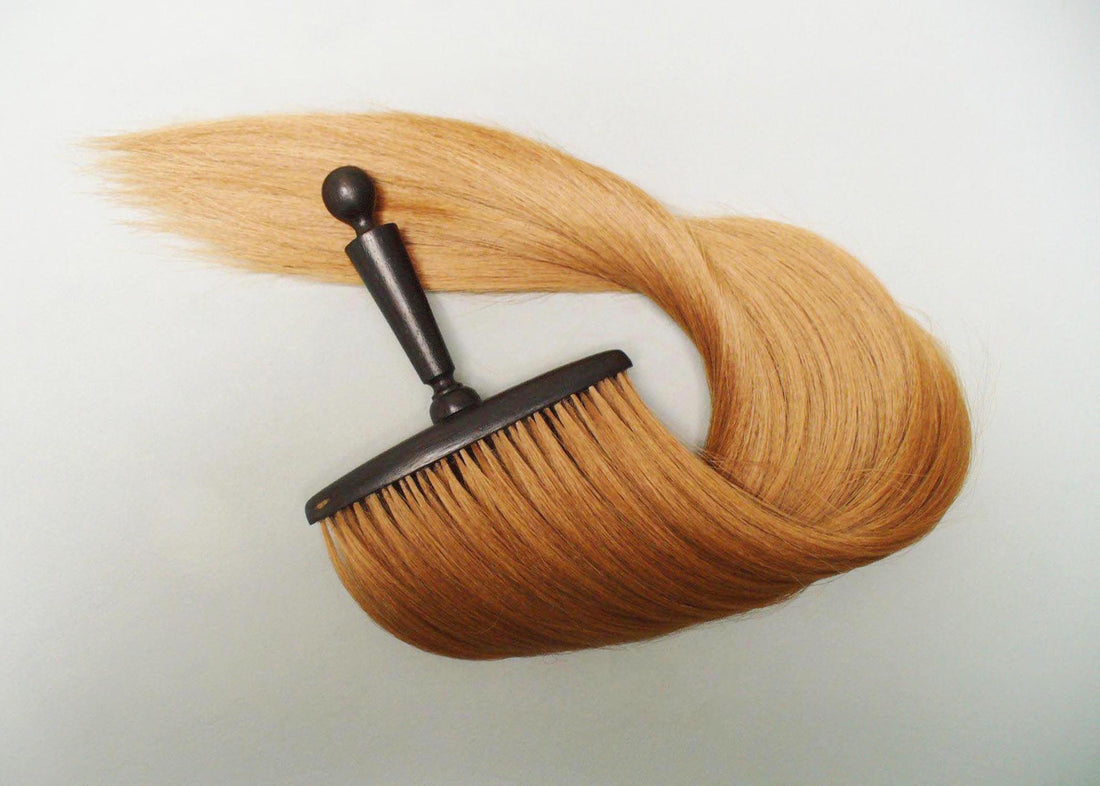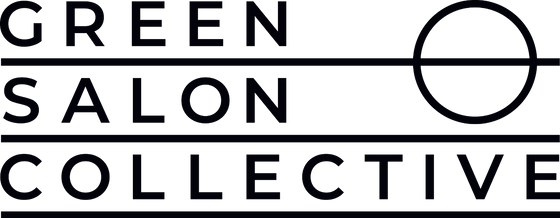
In conversation with Jane Hoodless...
As part of our research and development work, we often talk to and collaborate with artists and designers to find new ways to utilise waste human hair. Whilst we haven't worked with Jane (yet!), her work is incredibly interesting and we wanted to share some of her hairy projects with you. Keep reading to find out more about Jane, and what she's been getting up to with hair...
Tell us about yourself and what you do?
I am inspired by the criminal, the cultural and the curious. The thread that runs through my practice is the desire to know why people do what they do – or more usually, did what they did.
I am drawn to surreal marriages of objects and ideas, storytelling, and uncommon aspects of social history, and undertake significant research in all that I do. I work with a diverse range of materials and techniques (stone, wax, plaster, paper, textiles, organic matter or found objects – as well as hair), the choice of which is largely determined by concept and frequently turned on its head.
Working with words and images, and developing conceptual projects can be traced back to my initial training as a graphic designer, then as a magazine art director (Tatler, Opera Now and Esquire). I spent some subsequent time working in filmmaking and scriptwriting, and have worked as a visual artist for over two decades.
During the last few years, I developed and created CHANGING ROOM, a body of work that addresses some of the history and hysteria associated with menopause. Looking beyond my own experience, I was curious to know how women had dealt with the condition in the past, at times when things like clothing and conversation were infinitely more restricted. My research into the topic uncovered a controversial lineage, patchily recorded throughout time; the continued absence of which fuelled work that evolved into a museological ensemble of conceptual, narrative-layered pieces.
Tell us about your project(s) using hair? How did you become interested in hair as a medium?
SHORN OUT OF WEDLOCK was the first artwork I made using hair. I'd been thinking about how hair changes its significance after marriage, and has done so consistently: during diverse periods of history, and for both men and women in different cultures and religions. The wedding cake form was inspired by Victorian hair art, though is nowhere near as refined. I made the work at home, and it was unbelievably messy. With golden hair everywhere, I got increasingly irritated, and was reminded of Rumpelstiltskin turning straw into gold. I devised long plastic tubes to hold the strands as I wove, plaited and stitched them, and vowed never to work with hair again…

What ideas do you explore through your work with hair?
I consider myself a storyteller in the broadest sense, creating new or unexpected narratives, meanings or significances via the work I make. I am stimulated by the frisson that old or repurposed 'stuff' may have, and how it may connect to to its past.
A highly potent medium, hair does this on so many levels; displaying fashion trends, health status and/or inherited ancestral characteristics. Like some, I believe that hair retains the aura and energy of the person who grew it, and as such, can become a relic or talisman. Hair has a biological life cycle while we live and, since it doesn't rot, an eternal existence once we die. It combines the remains, the absence and the memory of a person.
How have you found working with hair? Have you faced any challenges by using hair as a medium?
Four or five years after making SHORN OUT OF WEDLOCK, I moved into a new studio and showed the work to someone there. A few days later, he messaged me to say "I've just seen a box of wigs in the street, but didn't want to freak you out by leaving it outside your door. This is where you can find it…" The box smelled really clean, like freshly washed hair – but it was full of hair lengths not wigs, all neatly plaited or bound.
I had just been awarded a residency to make a specific body of work that I didn't want to reveal while I was developing it. In the short time it took to me return to my studio, my mind flitted between thinking I could use this hair to make new work that I'd be happy to share, and how could I possibly keep it having read about the need for hair donations to make wigs for those who've lost their own? A little research clarified that wigmakers need longer lengths than the box contained, so I was able to use the bundles with a clear conscience.
I fabricated the hair in multiple ways: wet-felting, needle-felting, waxing it, stitching it, building it over sculptural forms, combining it with sourced objects, and enjoyed discovering its strengths and limitations.
I have a fear and fascination for moths (and their destructive tendencies), and decided to fabricate a Death's Head Hawk Moth. I wet-felted a very large piece to create MOTH CLOTH into which I needle-felted the detail. Needing to work with a great many different shades, I fashioned myself a 'palette' of yogurt pots of chopped hair that I arranged according to tone.

What would you like people to take away from your work with hair?
I tell stories, so aim for my work to present something conceptually unfamiliar, or reveal an unusual aspect of social history. I don't mind if a piece is disliked, because I am more interested in provoking discourse or inspiring a curiosity in someone who sees it.
I am particularly fond of combining hair with other objects, and spend a lot of time pondering surrealist mergers, such as HAIR RECEIVERS. These thirteen pieces are a mélange of ebony artifacts, unscrewed and reconfigured into new ensembles which are an unlikely harmony of dissenting parts; seemingly purposeful, yet without apparent function…

Once a recognizable component within ebony vanity sets, the hair receiver was an extension of the nineteenth century's obsession with hair. A small lidded pot with a finger-sized hole; it was designed to house loose strands extracted while brushing. The resulting mass was made into 'ratts', potato-sized bundles stuffed, shaped and sewn into hairnets, and worn beneath the owner's hair to create volume and height. It was, of course, a perfect match. Today vanity sets are as uncommon as the dressing tables they once adorned, and solitary hair receivers are mistakenly resold as ink or pencil pots.
I loved the term 'hair receiver'. It made me think of Bakelite telephones, séances and connecting with the spirit world – to do so using someone's hair seemed rather thrilling and magical…
What’s next for you, and your work with waste hair?
I don't know. I'm very tempted to see how I could use your industrial needle-felting machine. Coming full circle, I've recently finished making a group of sightless masks where all the hair was fabricated from textiles and haberdashery.
I surreptitiously enjoy the fact that people are generally quite disturbed by hair. And yet they always want to touch it, (not realising how easily an artwork may be damaged). I've had quite a few conversations with people about hair that have started in horror or disgust before gaining the slow realization that they may have kept their own fringe or plait, or a child's first curl, then recalling what they've done to their hair over the years! I enjoy changing people's perceptions on all kinds of levels, and that alone is likely to motivate me…
We hope that you enjoyed reading more about Jane and her work, as well as her motivations and experiences with working with hair as a material.
If you liked this blog post, why not read another conversation with an artist using human hair to create dresses? Read the interview with Jenni Dutton here.
About Jane Hoodless

@JaneHoodless [Instagram / Twitter / Bluesky]


